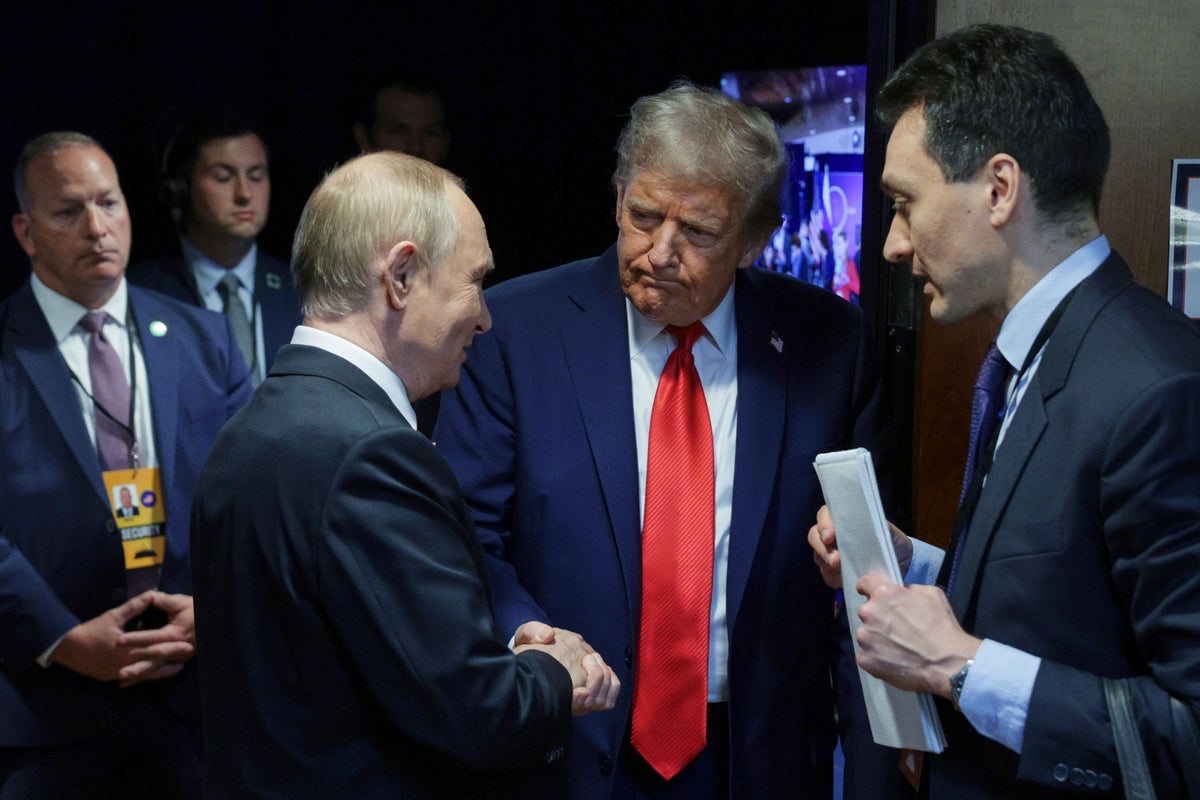Vladimir Putin, the Russian president, has named his price for ending the war in Ukraine. If he is given those parts of the eastern provinces of Donetsk and Luhansk that he does not already occupy, he would freeze the rest of the frontline.
His offer, made at the summit meeting in Alaska, was relayed by Donald Trump to Volodymyr Zelensky, the Ukrainian president, and Mr Trump then advised Mr Zelensky in a public interview to “make a deal” with Russia.
The US president’s position remains confused and ambiguous, but the implication that Ukraine should give up more land than it has already lost is not the right place to start. It is generally accepted, including by Mr Zelensky, that Ukraine will have to compromise in order to secure peace, but this would not be a compromise. It would be a straightforward concession, yielding to Mr Putin what he has been unable to win on the battlefield.
The right place to start the discussions about how to end this war would be on the question of how the peace will be guaranteed. Otherwise, any temporary cessation in hostilities, especially if it is bought by the ceding of territory, will be a chance for Mr Putin to regroup before renewing his attempt to subject the whole of Ukraine to his will.
Mr Trump showed some signs that he understands this. The European leaders he briefed after the Alaska meeting, including Sir Keir Starmer, said that the US president agreed that America would be part of international guarantees of Ukraine’s security after the war.
This is an important shift in Mr Trump’s position, from which it should be difficult for him to retreat.
Mr Trump’s position is not consistent. He gave Mr Putin much of what he wanted in Anchorage. The Russian president was treated deferentially as an equal by the leader of the world’s most powerful nation. He was allowed the symbols of Russia’s imperial past – the meeting place on former Russian territory; the USSR sweatshirt worn by Sergey Lavrov, the Russian foreign minister. He escaped any suggestion that the United States would ratchet up the sanctions imposed on his country. And he was allowed to continue the war in Ukraine that he thinks he is winning.
The one thing that Mr Putin did not obtain, however, is the most important, which was the immediate withdrawal of American support in arms and money for Ukraine. Despite Mr Trump appearing to be impressed by Mr Putin telling him how the 2020 election was indeed stolen – it was “rigged because you have mail-in voting” – the US president maintained a sufficient grip on reality, which is that the American people do not want their leader to show weakness.
All the same, that means that the next few days will be perilous for Mr Zelensky and the brave Ukrainian people that he represents. Sir Keir and the leaders of Ukraine’s other European allies must redouble their efforts to persuade Mr Trump not to humiliate himself by cutting and running, but to share the burden with Europe of security guarantees in the event of a genuine peace deal agreed between equals.
And in the absence of such an agreement, which is probably the most likely outcome because Mr Putin thinks he is winning on the battlefield, Mr Trump must be brought to realise that it is the Russian president who is the obstacle to ending the bloodshed.
The US president is unpredictable, but the one thing he will not like is the idea that he has been made a fool of, or that Mr Putin has outsmarted him. Mr Zelensky, Sir Keir and the other leaders of the coalition of the willing need to find a way of making it clear that this is a real danger.

